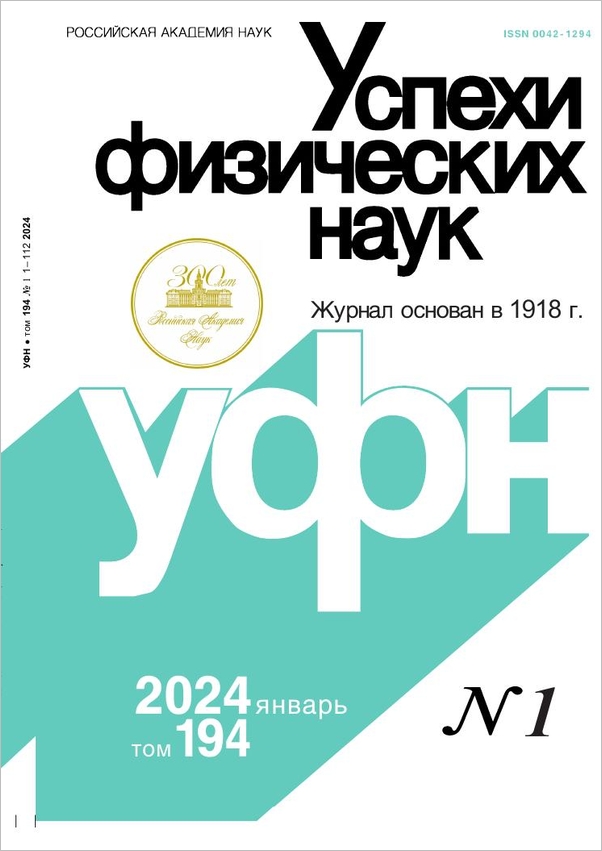|
This article is cited in 24 scientific papers (total in 24 papers)
REVIEWS OF TOPICAL PROBLEMS
Unusual rotations in helium and hydrogen nanoclusters and ‘nanoscopic’ superfluidity
B. S. Dumesh, L. A. Surin
Institute of Spectroscopy, Russian Academy of Sciences
Abstract:
This paper reviews research on helium clusters (of up to 20 atoms) and molecular hydrogen clusters (of up to 17 molecules) weakly bound by van der Waals forces to a light chromophore molecule such as $\mathrm{OCS}$, $\mathrm{N}_2\mathrm{O}$, $\mathrm{CO}_2$, or $\mathrm{CO}$. Such clusters form in supersonic gas jets and are studied through the spectrum of the particular chromophore used. It is found that as the cluster grows, its rotational frequency increases (the effective moment of inertia decreases) starting from a certain number of atoms (molecules) attached. Also, in $\mathrm{CO}$-based clusters a nearly free rotation of the chromophore molecule was observed. Experimental studies of such clusters are reviewed, as are those of the $\mathrm{N}_2$–$\mathrm{CO}$ and $\mathrm{CO}$–$\mathrm{CO}$ complexes in which both monomers nearly freely rotate. The relation of these rotations to the superfluidity of helium and hydrogen is discussed, and comparisons are made with spectroscopic experiments on chromophores and hydrogen clusters in liquid helium nanodroplets.
Received: March 2, 2006
Revised: April 18, 2006
Citation:
B. S. Dumesh, L. A. Surin, “Unusual rotations in helium and hydrogen nanoclusters and ‘nanoscopic’ superfluidity”, UFN, 176:11 (2006), 1137–1154; Phys. Usp., 49:11 (2006), 1113–1129
Linking options:
https://www.mathnet.ru/eng/ufn395 https://www.mathnet.ru/eng/ufn/v176/i11/p1137
|


| Statistics & downloads: |
| Abstract page: | 286 | | Full-text PDF : | 80 | | References: | 57 | | First page: | 1 |
|





 Contact us:
Contact us: Terms of Use
Terms of Use
 Registration to the website
Registration to the website Logotypes
Logotypes







 Citation in format
Citation in format 
